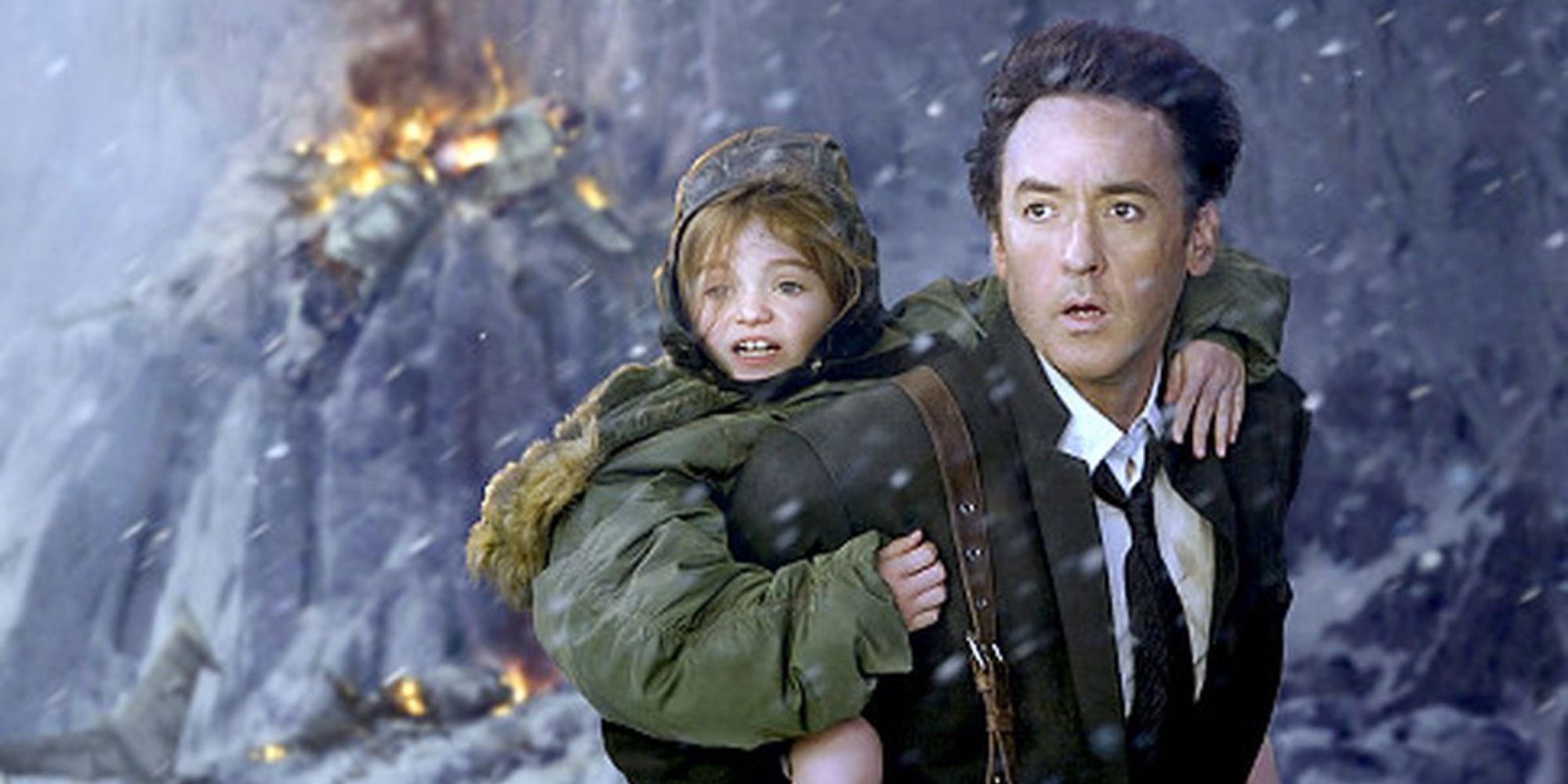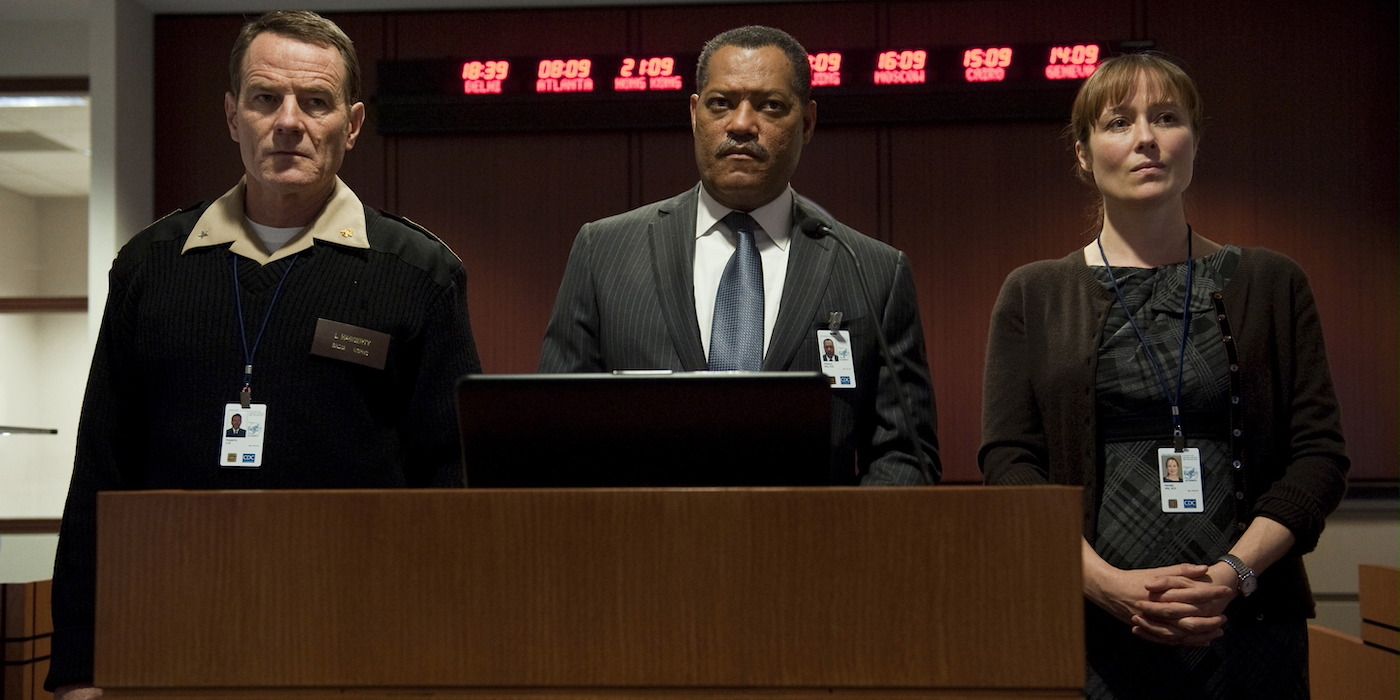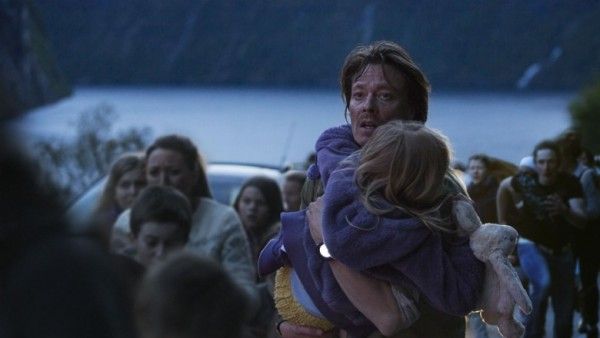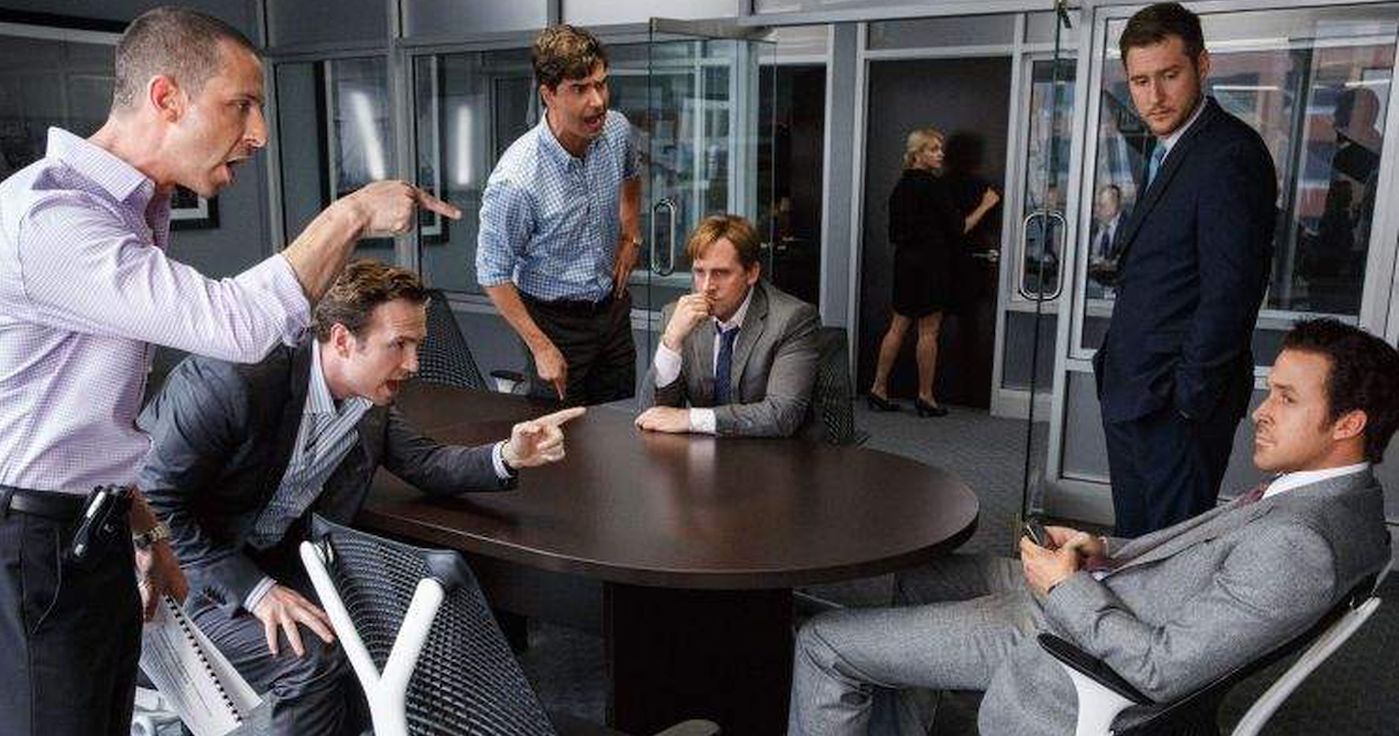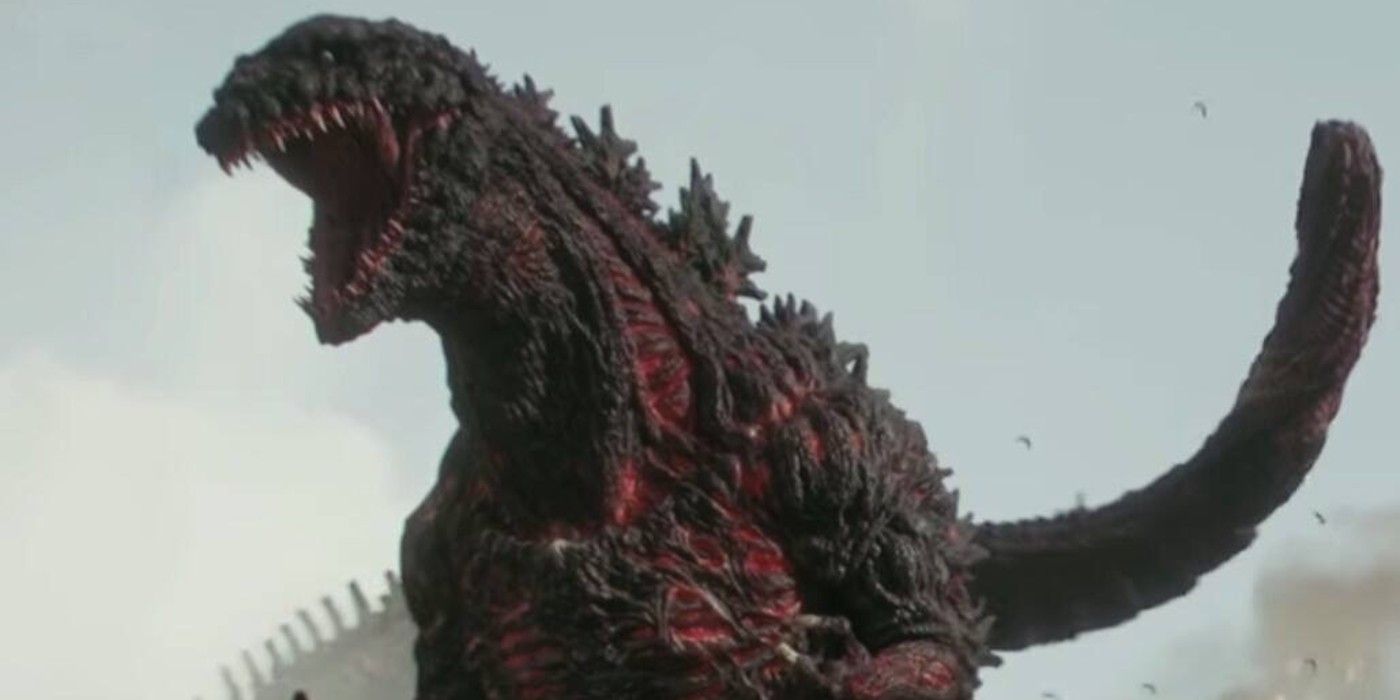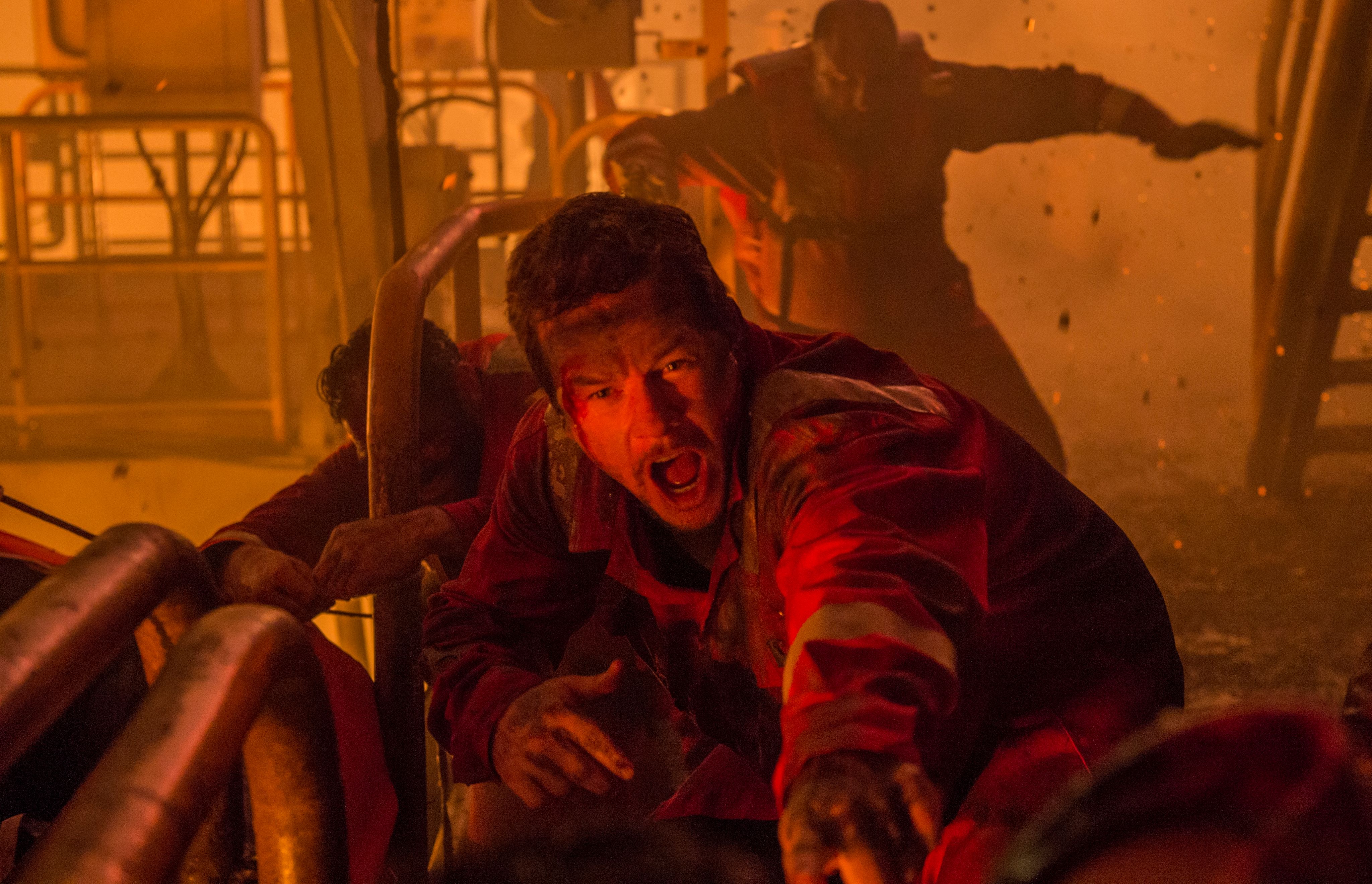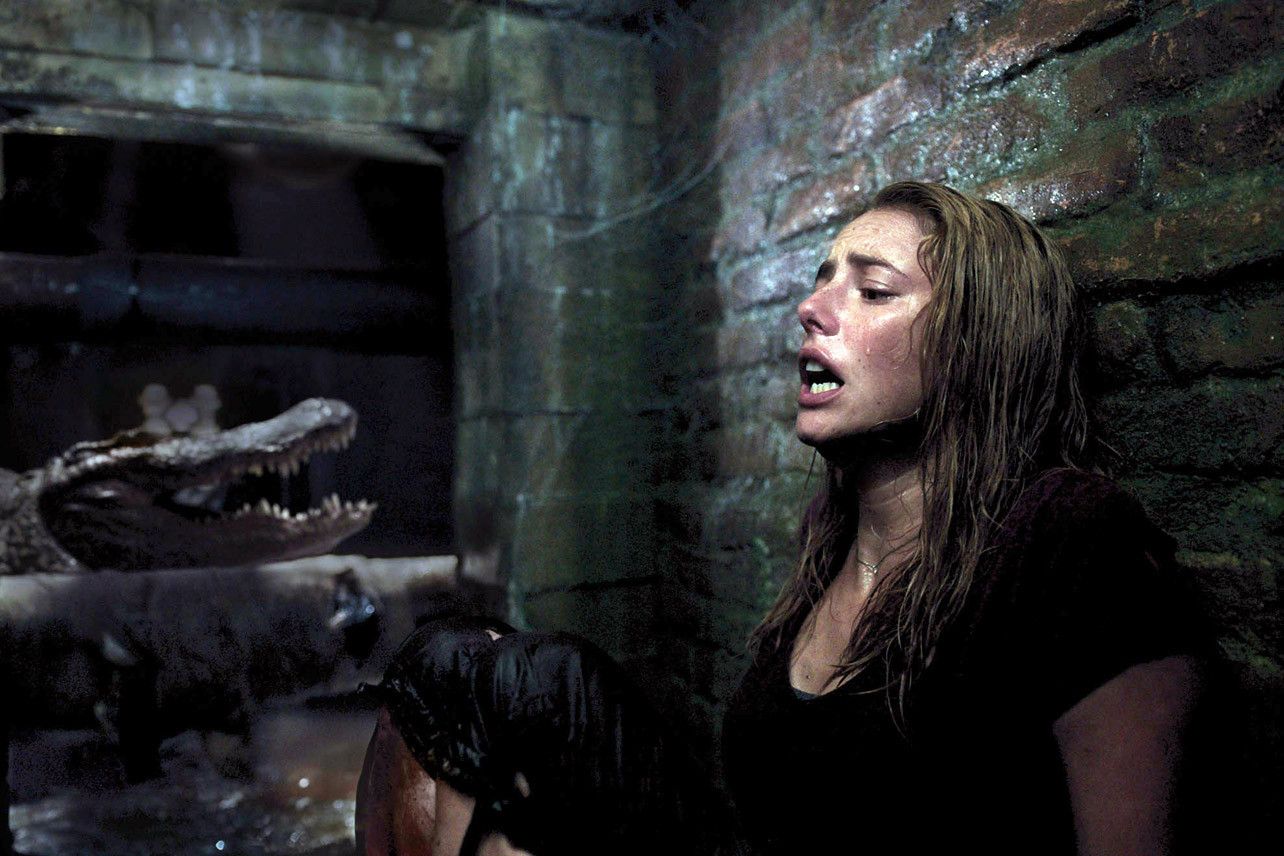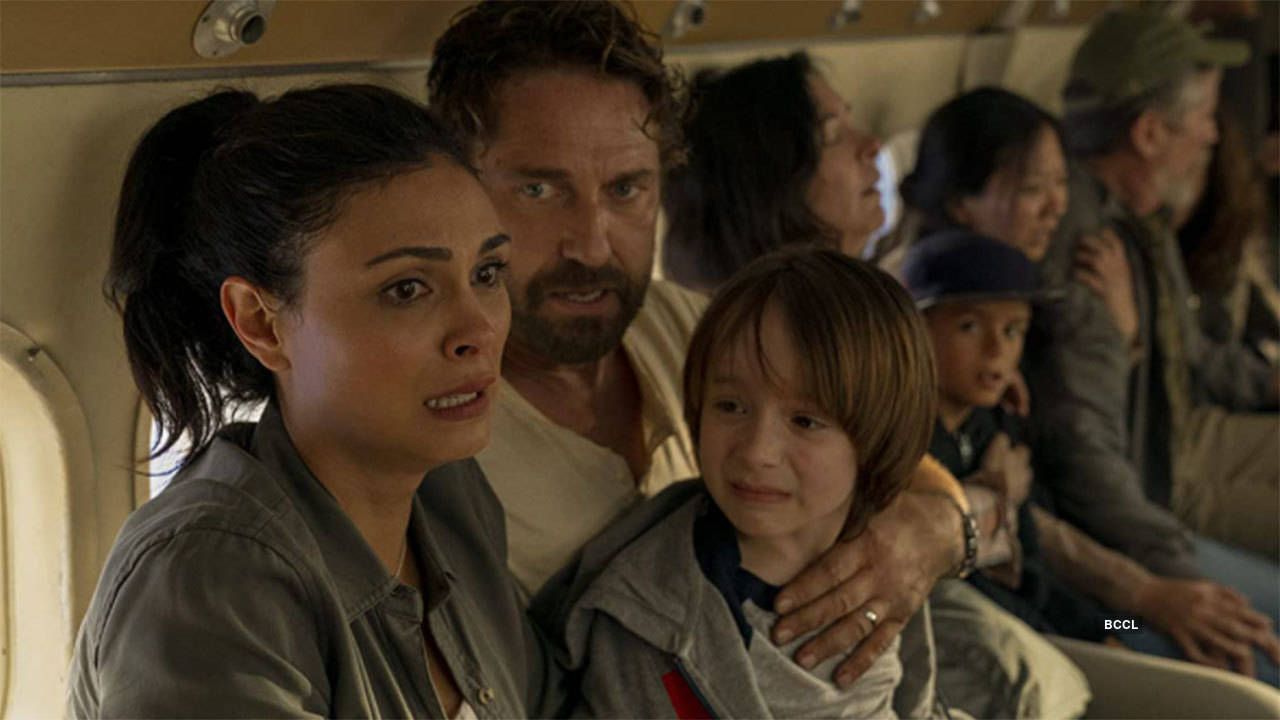Disaster films, like science fiction, are a fascinating window into society’s most pressing collective anxieties. The last two decades have seen a shift in our understanding of humanity’s existential threats, as well as additional exposure to more international entries - revealing that while some fears are geographically specific, there are more that are globally shared. The movies on this list give us a chance to explore these fears in an entertaining, mostly action-packed way.We’ve tried to include as wide a swath as possible in terms of different takes on the genre, while excluding zombies (who warrant their own exploration) or settings that are already post-apocalyptic. That said, this list covers everything from landslides to climate change to nuclear fallout to - of course - pandemics. The films also vary in tone from intensely dramatic to cynically comedic. However, all the movies covered here universally center around people’s attempts to prevent, escape, or cope with an impending disaster of epic proportions.
The Perfect Storm (2000)
Inspired by true events, Wolfgang Petersen's The Perfect Storm tells the story of the Andrea Gail, a commercial fishing vessel with a crew of six lost at sea during “The Perfect Storm” of 1991. Though the first act drags a bit, the film does set up the individual characters and their motivations quite well, including hardened sea captain Billy (George Clooney) and young, poor, and in-love Bobby (Mark Wahlberg). For these smaller-scale, more personal disaster films, understanding the stakes is very important - when the crew ultimately makes the call to head back through the storm in order to try to save their catch, we understand that they really need this money. It’s not greed or hubris driving this ultimately doomed decision, but a deeply difficult and human dilemma requiring the weighing of immediate peril against long-term survival.
K-19: The Widowmaker (2002)
One of the few female-directed entries in this genre from the early 2000s, Kathryn Bigelow’s K19: The Widowmaker is also the only true period piece on this list. Set in the early 1960s during the height of the Cold War, the story follows a Soviet ballistic missile nuclear submarine commanded by Captain Alexei Vostrikov (Harrison Ford with the faintest of Russian accents). When one of the reactor coolant pipes bursts en route to patrol Atlantic waters near the eastern shore of the US, it kicks off a crisis with the nerve-wracking high stakes of all-out nuclear war.
With Hollywood only recently beginning to explore the Soviet perspective of the Cold War, this film was admirably ahead of its time. It also serves as an early example of a strategy Katheryn Bigelow would perfect in a number of her later projects: focusing on highly unique, individual stories and intense personal stakes to reduce the emphasis on sides or political leanings. The already claustrophobic setting of a submarine adds cubic tons of pressure to the already tense Cold War atmosphere, resulting in a nail-biting experience where the stakes are global, but the action and suspense is expertly confined.
The Day After Tomorrow (2004)
Roland Emmerich has made an entire career out of imagining all the different and spectacular ways in which the world might end (sticking to only two of his films for this list was a bit of a challenge). Starring Dennis Quaid and a young Jake Gyllenhaal as paleoclimatologist and son, respectively, The Day After Tomorrow goes the environmental-apocalypse-triggers-new-ice-age route. The film follows the aforementioned characters as their family is torn apart, reunited, and ultimately rescued while trying to survive in a newly iced-over Manhattan. Though the science of flash-freezing cyclones is a bit far-fetched, critics and the scientific community alike applauded its effort for being one of the first to tackle the subject of climate change (and the government’s inability to take meaningful action to combat it) in a major release.
War of the Worlds (2005)
A staple of the disaster film genre, alien invasions can trace their origin to H.G. Wells' 19th-century novel The War of the Worlds. Though the original work served as an allegory for the British Empire’s pre-WWI preoccupation with national defense, director Steven Spielberg avoided directly choosing a topic for exploration in his more modern adaptation (though there are sequences that seem to draw parallels to the September 11 attacks). Unlike other entries on this list, there is little humans can do to stop the threat at hand - no miracle cure, no military force powerful enough. The strategy is to run and hide.
Although it’s clear the Martian attacks are happening around the world, the viewer only experiences the invasion through the eyes of the Ferrier family, made up of slightly-absent father Ray (Tom Cruise) and his two estranged children (Dakota Fanning and Justin Chatwan). While Cruise doesn’t quite pass for a Brooklyn longshoreman, we don’t have to wait long before he is back in his element, accent dropped and running at full clip from massive explosions. Though critics were notably critical of the throwback alien tripods in initial reviews, it’s fun to see the vintage metal monsters off the cover of the old pulp magazines brought to modern life, and the film may actually be the origin of the now-famous ubiquitous sci-fi trailer bass drop: “BWAAAH”.
Cloverfield (2008)
Often described as Blair Witch meets Godzilla, the small cast and tight, shaky shots of Cloverfield conjure up a firsthand experience of the devastation and horror of being stuck in Manhattan while a skyscraper-sized monster destroys the city. The cinema-verite style of the film caters well to Lost writer Drew Goddard and producer J.J. Abrams’ obsession with keeping the audience guessing. This carried over into the marketing and production of the film where mystery was the main tool to increase buzz: the casting process was carried out in secret, and the initial trailer for the film was presented with no title attached (though fans looking for more information were led to the official movie site “1-18-08.com” where a collection of grainy time-coded pictures challenged users to interpret their own meanings).
Cloverfield has aged well in a world where we’ve become more accustomed to seeing current events unfold through the lens of a camera phone. Avoiding a number of common genre tropes, the characters we end up following aren’t specially equipped to handle the disaster, but rather just bewildered spectators - as most of us would be - helplessly documenting the insanity unfolding around them.
2012 (2009)
Another Roland Emmerich entry, 2012 is a seriously underrated gem of a classic disaster film. Featuring a wonderfully diverse and eclectic crew of characters - John Cusack as a writer on vacation with his kids, Amanda Peet as his estranged ex-wife, Chiwetel Ejiofor as the chief scientist, Danny Glover as president, Thandie Newton as first daughter, and Woody Harrelson as a delightfully unhinged conspiracy theorist - the film does a good job of exploring the impending apocalypse from a wide number of perspectives. It uses the ensemble cast to thoughtfully explore the idea of how classism and elite panic manifest in times of crisis, and at least accounts for how us normal folks without billions of dollars or a PhD in astrophysics would make out. To be fair to its detractors, the runtime is way too long, the special effects are absolutely insane, and the disaster at the center of this one is maybe the most outdated and trendy (Mayan calendar anxieties are no longer really front of mind), but the performances and action are so fun it ultimately doesn’t matter.
Contagion (2011)
Maybe not the most pleasurably escapist of all the entries on this list, Steven Soderbergh’s prescient Contagion does an admirably precise job of depicting the fall-out from a global pandemic, while still crafting a well-paced and entertaining film. The story covers many concepts now all-too-familiar to most of us - contact-tracing, quarantine, panic buying, disease reproduction figures, and even the unfortunate conspiracy theories - that we watched unfold in reality over the last few years. It’s astonishing to note how well Scott Z. Burns’ script (and the epidemiologists who consulted on it) perfectly predicted many of the major points of the COVID-19 crisis, and it’s a testament to the ability of thoughtful, well-made cinema to capture exactly where humanity is and where we may be going with frightening accuracy.
The Wave (2015)
The Norwegian film The Wave does an incredibly effective job of the buildup to the disaster, opening with pulled-from the headlines clips about deadly landslide-triggered tsunamis dating back decades. The film lingers in the suspense of the increasingly undeniable nature of the warning signs (initially just slightly askew measurements, ultimately a mountain physically contracting) by following our geologist protagonist, Kristian (Kristoffer Joner) as he desperately tries to get anyone to take the threat seriously. Kristian’s obsession with the mountain he is tasked with monitoring likely feels familiar to anyone who has lived in a place where people adopt a grim acceptance of the inevitability of the “big one” - a massive environmental event that will be utterly devastating and hit without warning (think Mount Rainier, Yellowstone). Though there’s hope in the survival of some individual characters, the film ends with an eerie warning to the audience that the threat it addresses is very real and in no way resolved.
The Big Short (2015)
While Adam McKay’s recent Don’t Look Up may take on this genre in a more obvious, traditional way, The Big Short is still arguably his best entry in the category (and likely to remain so). For many people, the 2008 financial crisis was a disaster of existential proportions, and the film captures the build-up, denial, and subsequent chaos surrounding the collapse of the housing market in a way that feels eerily similar to the other films on this list. One of the most remarkable aspects of the film is the very complex tonal balance between comical, educational, and respectfully serious that McKay manages to strike, which is accomplished largely by utilizing the different viewpoints of his various characters played by a strong ensemble cast that includes Ryan Gosling, Brad Pitt, Steve Carrell, Christian Bale and a pre-Succession Jeremy Strong. While this may not be the most action-packed of disaster films, it’s an entertaining entry and an incredibly important one to digest.
San Andreas (2015)
Though Rampage is perhaps the best of Dwayne Johnson’s numerous fending-off-massive-destruction vehicles, Brad Peyton’s San Andreas is the most classically “disaster movie” in a way that rarely gets made anymore. The film follows a rescue helicopter pilot (Johnson) as he makes the perilous journey across California with his ex-wife (Carla Gugino) to rescue their daughter (Alexandra Daddario). There’s nothing too groundbreaking going on here (apart from the San Andreas fault-line itself), but it’s a fun enough ride carried by a strong, committed cast that also includes Paul Giamatti as a frazzled seismologist and the all-important bearer of bad news. It’s also nice to give New York City, Tokyo and London a much-needed break from the CG devastation, if only to make way for the trailer’s delightfully cheesy slow cover of “California Dreamin’.”
Shin Godzilla (2016)
The post-2010 timeframe is filled with a number of noteworthy Kaiju films - Godzilla: King of the Monsters, Godzilla vs Kong, Pacific Rim, and the aforementioned Rampage, just to name a few - however, 2016’s Shin Godzilla (also marketed as Godzilla: Resurgence) is the stand-out from the country who started it all. Originally serving as an allegory for the atomic bombings of Hiroshima and Nagasaki, Godzilla has always been deeply rooted in Japan’s most pressing and historically devastating existential fears. This time around, Hideaki Anno and Shinji Higuchi’s film was conceived of in a country still reeling from both the Fukushima Daiichi nuclear disaster and the TÅhoku earthquake and tsunami.
Shin Godzilla is not nearly as high-budget or CGI-laden as its Hollywood counterparts, and there’s more time spent on war-room debates than massive explosions. While that may sound dull to fans of the American franchise, the dialogue-heavy approach is surprisingly engrossing and allows for an interesting exploration of current Japanese pop culture as well as a targeted critique of both unwelcome international intervention and the country’s own bureaucratic processes. The result is something that is more akin to Dr. Strangelove than a traditional monster movie.
Deepwater Horizon (2016)
Director Peter Berg and Mark Wahlberg went on a “true story” disaster/survival film kick in the last decade that was met with varying levels of success. However, Deepwater Horizon stands out for its well-executed coverage of one of the largest ecological disasters in modern US History. The story revolves around the 2010 Deepwater Horizon explosion and subsequent oil spill near the Gulf Coast that killed 11 people and discharged roughly 210 million gallons of oil into the ocean. Though the effects of the disaster were enormously far-reaching, the film keeps its scope wisely narrow, choosing to focus on the causes of the spill in painstaking detail and the individuals working on the rig at the time the catastrophe struck. The film could definitely make a stronger statement about the greed and irresponsibility that contributed to the perfect conditions for such a disaster, but it’s a worthwhile chronicle of an event worth remembering nonetheless.
Pandora (2016)
South Korea has released a number of fantastic disaster films covering the whole spectrum over the last few decades - 2009’s Tidal Wave (tsunami), 2013’s Flu (pandemic), 2019’s Ashfall (volcano), and the masterpiece that is 2016’s Train to Busan (if only zombies weren’t off-limits). However, with the brilliantly haunting miniseries Chernobyl being ineligible for this list, Park Jung-woo's Pandora is another great selection to represent the nuclear meltdown category. The major beats of the story, though fictional, will be familiar to fans of HBO’s 2019 show: a nuclear facility is the main employer in town, something goes horrifically wrong at said nuclear facility, the government is in way over its head and ultimately tries to cover things up, ordinary people suffer. However, the modern setting and strong performances both ultimately make this a compelling watch, as does its wholly unique take on the brilliance of normal people thrust into extraordinary circumstances.
Crawl (2019)
From the first few opening shots of Alexandre Aja's Crawl, you can already tell it’s a better movie than it needs to be. We come in on our protagonist, a University of Florida swimmer named Haley (Kaya Scodelario), perched and ready to dive into a race, only to come away with yet another disappointing loss. The film quickly sets up some interesting familial dynamics that add an additional, compelling layer to what is essentially a premise of “Deep Blue Sea but with alligators,” while accurately capturing the routine but tense process of evacuating for a hurricane and checking to make sure everyone you love is safe and sound. Bolstered by solid performances and some great jump scares, Crawl proves that Sharks have had their go - it’s gator time.
Greenland (2020)
For those craving a grittier, darker take on a disaster film, Greenland will hit the spot. Though not as fun as, say, 2012, it attempts to paint a more realistic picture of what would happen in the event of an impending comet apocalypse. At times downright stressful, the story revolves around a structural engineer (Gerard Butler) whose family is one of the few publicly selected for preservation, only to be separated before they can make it to safety. Further complicating the situation, his only son (Roger Dale Floyd) is diabetic, which negates his selection. It’s an intense two hours with little in the way of spectacle or large-scale special effects, however the focus on the exploration of humanity - both its most redeeming and worst qualities - makes for a memorable take on the genre.

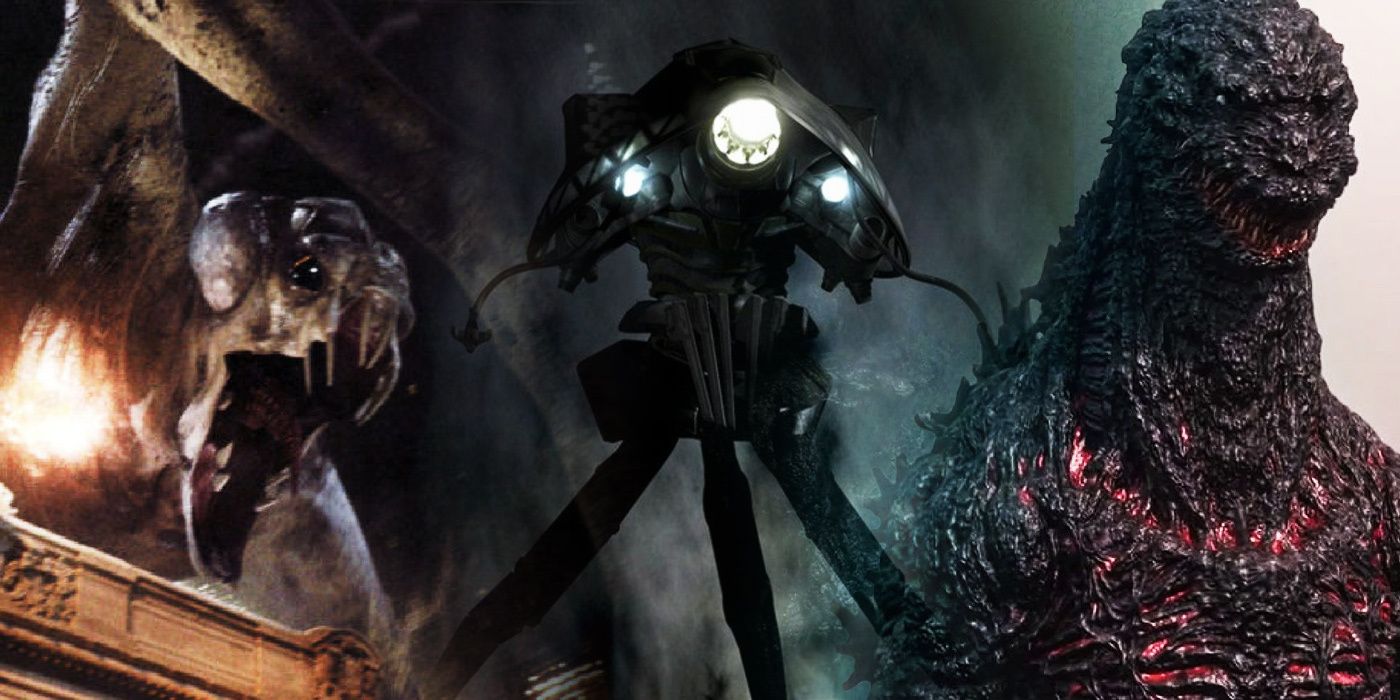
.jpg)
.jpg)
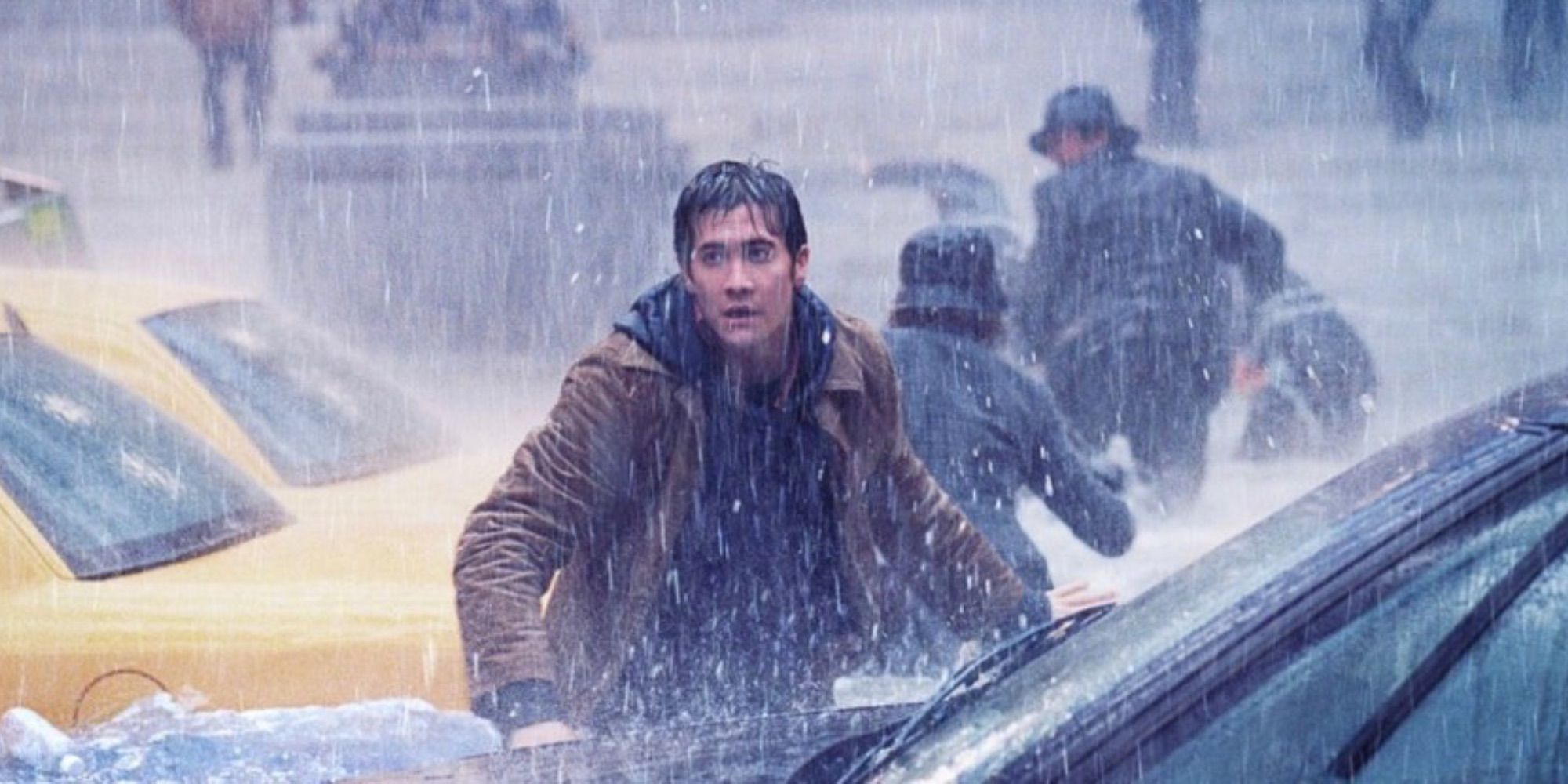
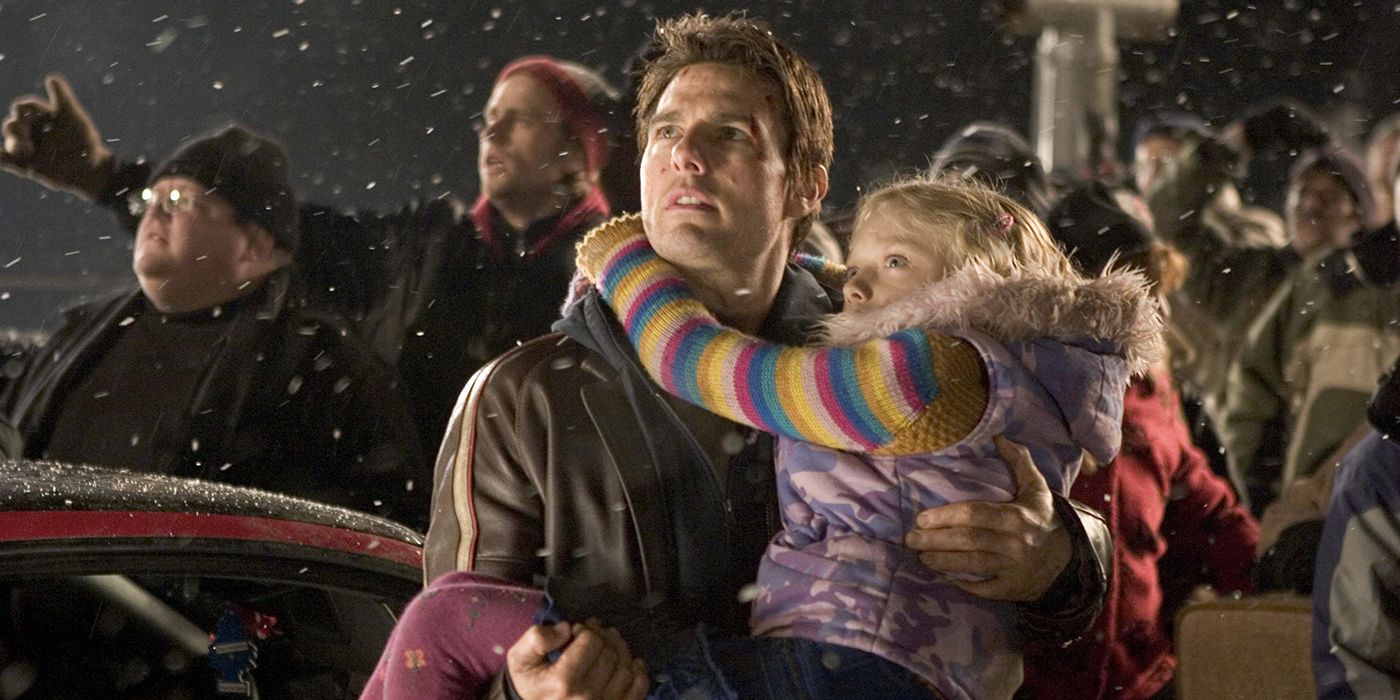
.jpg)
